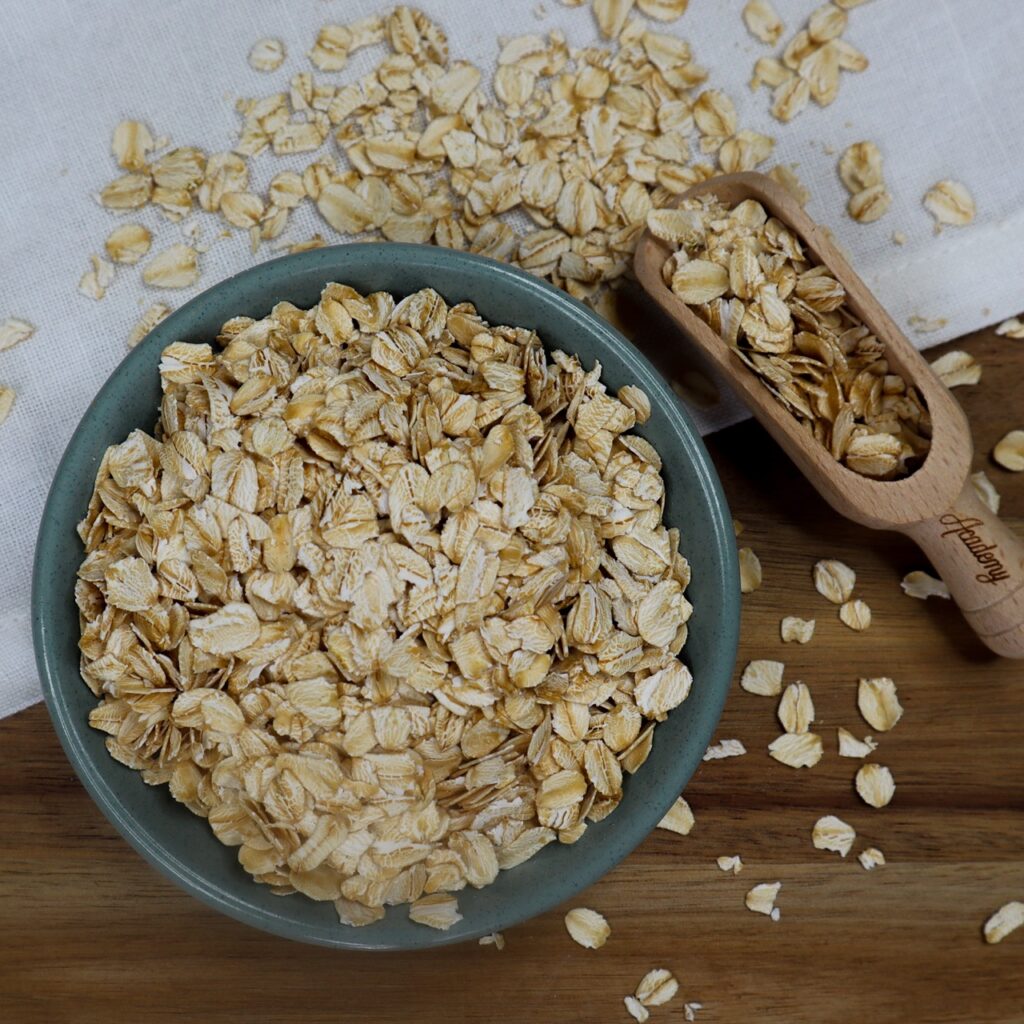Katanning Rolled Oats
KATANNING ROLLED OATS
A POPULAR LOCAL COMMODITY

Great Southern Herald
24 October 1941 – P1
A flourishing secondary industry of the Katanning district, which during recent months has assumed greater activity, is the manufacture of rolled oats at “Bermuda“, the farm of Mr. Alfred E Radford, on the Broomehill-Kojonup Road.
To the uninitiated, the manufacture of rolled oats simply entails the crushing of the ripened grain, but in cold reality the process is much more complicated and one which requires considerable expert knowledge and a big quota of special machinery.
An interesting feature of Alfred Radford’s industry is that the whole of the machinery and the process itself was his own invention, and the fact that the entire plant was made from old machines, such as threshers, binders and chaff cutters, renders it all the more ingenious.
Then again, the raw products used in the process, Mulga and Algerian oats, are grown extensively throughout the district, so that the whole industry may be termed “self-contained.”
The Process Described.
First of all, the oats are thoroughly cleaned in a series of revolving drums. The grain is taken into a threshing drum, where the application of steam toughens the outside skin and facilitates the shelling process. The whole mass is carried on, the fine dust is removed and finally the husks are separated from the kernels by means of a specially arranged sieve. The kernels are given a final cleaning prior to being passed through steel rollers which complete the crushing, or rolling, process.
The process involves the use of a long series of special machines which have cost Mr. Radford many hours of patient experiment and hard application, as well as a considerable amount of capital.
Fallacy Explained.
When investigating a complaint that the oatmeal, in its raw state, possessed a slightly bitter taste, Mr. Radford decided to seek expert advice and arranged an interview with one of the professors at the Perth University. The professor, on hearing the complaint, smiled, and informed Mr. Radford that the bitterness was caused by the presence in the kernels of vitamins. During the crushing process, he said, the germ of the oat was killed, this causing the growth of a minute fungus which contained a large percentage of health-giving vitamins, one of the most necessary foods to the human body. The bitterness, said the professor, was removed when the oatmeal was cooked, and as people did not eat the raw product, he could see no reason for complaint.
The Output.
Mr. Radford states when the plant is working at top pressure the output is one ton a day. In the past he had supplied one large Perth distributing firm continuously with four tons of oatmeal a week, while practically all the stores in the Katanning district stocked and sold the product.
It is a curious fact that in such a large primary producing country as W.A., Mr. Radford is the only manufacturer of oatmeal, the State having depended hitherto on Eastern States sources for its supplies.
Mr. Radford states he welcomes visitors, and advises those who wish to see the process in operation to make an appointment either by letter or by telephone.
